An unusual decoration of your garden will be a flower hydrangea variety hot red. The inflorescences of this plant resemble a fireball against the background of large dark green leaves. It is very simple to care for the shrubs, even a beginner gardener can cope with the methods of reproduction. To get plenty of hydrangea blossom, you need to know some features of growing colors. In compliance with all rules, hydrangea will become the queen of the whole garden.
Hydrangea Hot Red - a specification description
Hydrangea is a deciduous perennial shrub, an adult plant shape resembles a ball. Each colorhouse forms a large number of colors shallow shape. Bright red tint petals. Flowers are collected on the top of the main stem in the lush cap, which can reach in diameter 15 cm.
Hydrangea is blooming in June and continues to bloom until September. Such a long flowering period you can get if you hide a shrub for the winter. The fact is that the flowers are formed on the kidneys that were laid back from autumn. If you do not insulate the plant for wintering, then young kidneys will die from the minus temperature. But hydrangea is rapidly restored in one season, so the next year the bush will again bloom.
The adult plant has a height and width of about 1 m. The bush for the season can increase in 20 cm. On the entire circumference (height and width). Young shoots of hydrangea are light green, the upper twigs grow vertically, the side bends the arc. The leaves are wide and large dark green color, are located tightly to each other and to flowers. Have an ovoid shape, to the top of the leaves are sharpened, on the sides of a serrated edge.
After flowering, a box with several cameras is formed (from 2 to 5 pcs.), Inside which seeds ripen. It is very important to observe the pH level of the soil, since the color of the petals directly depends on it. For a variety of hot red, a slightly acidified soil is required. If the acidity of the soil increases greatly, then the flowers can purchase a blue color. For the earth with neutral acidity, buds acquire a white, lilac or cream shade.
Very seriously, it is necessary to treat the issue of watering the bush, since this type of hydrangea is very moisthared. But it is important to observe the scraper schedule, and not to pour daily flowers with plenty of water.
After complying with the conditions of soil moisture, the second is not a little important item for the care of hydrangea varieties hot red is trimming. The bush responds well to it, but it is important for abundant flowering to follow the rules of trimming. In the question, feeding does not need to be used in a large number of organics. She will give rise to branches and leaves, which will reduce flowering.
Since the hortensia bush has a spherical shape, it is able to visually expand the space in the garden. This feature can be used in small areas or to decorate a small part of the garden.
Hydrangea Hot Red - Rules for Flowers
In order for hydrangea to fully developed throughout the growing season, it is important not only to prepare landing soil and comply with the features of landing seedlings, but also choose the right place to grow shrub. But, despite the conditions of cultivation, the landing of the hydrangea will love even a novice gardener.
Choosing a place to grow hydrangea Hot Red
When choosing a place for a permanent growth of shrub, keep in mind that hydrangea loves well-tidy and open areas in the garden. At the same time, tender flower petals can burn straight sun rays. Therefore, it is necessary to have a bush in a half, which will tighten the plant at midday.
You can also plant hydrangea near the wall or fence, but only in such a way that the sun's rays fall on the bush in the bus. In this case, plots on the eastern part of the garden are more suitable for landing. Additionally, the fence or other elevation will save hydrangea from wind and draft.
Do not land flowers under the trees or completely in the shade. The bush will not be able to form normally. As a result, flower can become smaller or abyss. It is mistaken to believe that hydrangea will grow well in low-lying sites or near groundwater. The plant loves water, but the excessive moisture of the soil will lead to diseases and reinforcement of the root system.
Preparing the soil for landing hydrangea Hot ed
It is very important to observe the acidity of the soil, since any deviation from the norm leads to a change in the color of the colors. For hydrangea of \u200b\u200bthis species, it is considered an optimal variant of the soil with medium acidity. On too acidic soils, the color of the petals is becoming bright, but changes in the direction of the blue shade. The soil with a neutral medium slows down the development of the plant, and stains petals in pale shades.
When preparing soil mixture, avoid adding lime and do not use for drainage pieces of chalk. Also do not add wood ash. These components will lead to a decrease in the acidity of the soil. With the growth of hydrangea on alkaline soil, the leaves are gradually yellowing, since the plant is subjected to chlorosis and suffers with a lack of iron with magnesium.
If you have a low acidity in the garden is low, then in a portion for growing a bush, often acidify the soil and make a sufficient amount of iron chelata. From fertilizers in a mixture of soil for planting, you can add mineral fertilizers with a large content of iron. Use the organic in small quantities, since the oversupply of nutrients can reduce the flowering of the shrub.
Sand soils for the cultivation of hydrangea are contraindicated. A plant is well developed on clay soils or gumus rich. Therefore, in a mixture of soil for landing do not add sand. Such a feature of the soil is explained by the fact that hydrangea is a moisture-loving plant. But at the same time, it is necessary to often pherring the clay soil after rain and watering so that the crust is not formed on the surface around the bush.
For the soil mixture, take in equal proportions peat, turf and leafy ground, as well as humus. This mixture is still suitable for landing: 2 parts of the garden land (chernozem) and 1 part of peat with humus. From fertilizers, contribute according to the instructions for 1 kg. Soil mixture: urea, potassium sulfate and superphosphate.
Experienced gardeners are often used to fit the hydrangea soil near coniferous trees. It is loose, slightly acidified, as well as when it can be added, you can not make feeding. If you doubt the acidity level of the soil, and what to use fertilizers, then buy in garden centers the finished soil mixture for the cultivation of hydrangeas.
Rules of landing of hydrangea seedlings Hot ed
Hydrangea is planted at a permanent place 2 years after the formation of processes or rooting of cuttings. If you plan to plant purchased seedlings, then carefully inspect them during the purchase. Purchase hydrangea sprouts only from proven sellers or in well-known garden centers. When buying seedlings in nurseries, give preference to enterprises located in your region. So the plant will be rapidly acclimatized on your site.
Save the root seedling system during the landing can only be purchased by plants in the container. But so you will not be able to estimate the state of the roots. Therefore, many gardeners prefer to acquire seedlings with an open root system.
The roots in a healthy plant are flexible, no elastic, elastic, are quickly returned during twisting in the original position. Choose those seedlings in which the roots do not have damage and traces of rot. Also pay attention to the state of the renal plants. In a healthy process, they are alive, without dried edges. The upper part of the sprout should be without damage, and the color of the cortex is uniform over the entire length.
Spring is considered to be the best time for landing hydrangea, especially in the northern regions. Such a period before the fall will give the opportunity to grasp the seedlings and prepare for wintering. But it is allowed to land colors in the autumn months, which is favorable only for regions with a warm climate.
- Hydrangea will require a lot of space around him. So from the nearest trees and other shrubs, retreat 2.5 - 3 places. Set the distance between the hydrangea hydrangea bushes, set 150-160 cm. When falling out colors in the form of a living hedge, a trench is allowed to prepare a width of about 1 meter.
The landing hole is preparing for 2-3 months before landing seedlings. The root system of hydrangea is close to the surface, so the pit does not dig deep. There will be quite a depth of 35-45 cm. The width of the wells should be sufficient about 50-60 cm. Since the roots of the shrub grow losses. - To put drainage to the landing pit, pour a small amount of previously prepared soil mixture for landing. Form a small slide out of it. Install a seedling center in the center of the database from the soil, but in this position so that the root neck is located at the surface level. Forers straighten into different directions. Carefully sprinkle the soil around the plant. Press the earth around the stem and form the edges of the well.
- Immediately after landing, the hydrangea must be wedged with warm water. It is also recommended to lay a layer of mulch. Young sprouts in the first months should be covered from direct sunlight and wind.
Hydrangea Hot Red - Features of Care
Care for hydrangeas in the open soil will not be much difficulty even for beginner gardeners. But there are mandatory conditions that need to be compliant. This applies not only to the right watering and trimming of the shrub, but also daily color care.
Garden care for Hydrangea Hot Red
For full-fledged colors, it is necessary to carry out frequent ass. This is a prerequisite for culture care. The fact is that the root system of hydrangea is very close to the surface, and weeds will take part of the nutrient elements from the soil. Therefore, culture will not be able to fully develop. In addition, weed plants can carry diseases.
A lot of an important procedure for caring for hydrangea is the loosening of the soil around the bush. So you will increase the aeration of the roots of the plant and do not allow soil winding after irrigation. But it is necessary to spend it very carefully in order not to damage the root system.
Swimming is carried out only a few times in spring and summer, as well as after the protracted rains. It is important when loosening does not ignore the inventory into the soil deeper than 5 cm. If your soil is meditated, it is not necessary to loosen the soil.
Conditions of watering flowers hydrangea Hot ed
A very important point in caring for hydrangea is the right watering, since this plant is very moisture. But at the same time there is a subtle line between abundant and excessive irrigation. Shrub is contraindicated in drought, otherwise the development of hydrangea will be disturbed or it may not bloody.
- In ordinary weather, Hingtonesia must be watering 1 time in 2 weeks from 15 to 20 buckets of water depending on the age of the bush. Arid summer or during long hot days, increase the frequency of watering up to 1 time per week for 20 buckets of water. If rainy summer was issued, then cutting watering. On these days, Hydrangea should be watered 4-6 times per season.
- For watering, use warm water with the addition of 3 grams of manganese at each bucket. This will prevent the formation of rotting on the roots and plants stems. Water is poured slowly and evenly throughout the surface of the attractive well. Watering is necessary in the early morning watches or late in the evening so that the sun's rays do not burn the leaves and petals of colors.
- Watering by most plants decreases in the autumn months, but this rule does not concern hydrangea. The lack of moisture before wintering will significantly reduce the winter resistance of the plant. Therefore, in the autumn period, in the absence of rains, watering through the usual schedule.
Feeding for large-scale hydrangea hot ed
Hydrangea bush is growing rapidly and has abundant flowering. This feature of the plant leads to the need to use a large number of fertilizers. But due to the acidity of the soil, which can lead to a change in the color of buds, it is important to use certain feeding strictly at the specified period of hydrangea growth.
- If you used fertilizers in the preparation of the soil mixture for planting, then in the first two seasons you do not need to make fertilizers. For adult plants, there are 2 rules for making feeding. The first part is made up to July and must contain acidic fertilizers based on potassium sulfate or ammonium sulfate. The second part of the feeding is used from July to October and contains potash-phosphoric drugs.
- In the period of active growth before the flowering of the bush (middle or end of May), make comprehensive mineral feeding. To do this, divert 25-30 g. The drug for every 10 liters of water. In the growth phase, you can add organic fertilizers, but in a small concentration. Fertilizers should be repeated in 2 weeks.
- Change the composition of the feeding should be 14 days before the flowering of hydrangea. At this stage, potassium-based fertilizers are required, which will support the formation of buds and strengthen the color of the petals. To do this, prepare a liquid feeding, consisting of 45 g. Potassium sulphate, 70 g. Superphosphate and water. Pour the plant with the resulting root solution.
- As soon as the buds began to disperse, repeat the feeder based on potassium. This will extend the flowering of hydrangea to the low edge and will provide the kidney book for the future season. A month before the shelter of the plant for wintering, make fertilizers with bone flour.
Do not add wood ash to fertilizers. It reduces the acidity of the soil, which will make the color of petals pale. If you do not have separate preparations for hydrangea, then use complex fertilizers for rhododendron and heather plants.
Nitrogen-containing feeders use only in late April or mid-May. The overabundance of nitrogen will reduce the winter-hardy properties of hydrangea and will contribute to the appearance of rot. The oversuetting of organic fertilizers will strengthen the growth of the ground part of the bush, which will not give abundant flowering.
Proper cutting of hydrangea colors Hot red
Large hydrangea variety hot edge refers to the first pruning group. This means that the flowers are formed on the shoots of last season. It requires a cosmetic and sanitary trimming. The optimal time for trimming is the early spring, when the kidneys are just beginning to swell, and the juice has not yet started moving on the branches.
- Pruning of hydrangea bushes is divided into several stages. The first trimming is carried out in the seedling season and the next year. Cut is needed inflorescences at the stage of formation of buds, the size of the pea. Such a procedure will allow the plant to send their strength to the development of the root system and the ground part of the bush.
- The second stage of trimming belongs to the already formed plants that are for several years. Large hydrangea is not trimmed completely, but only rejuvenates. To do this, remove every fourth extension over 3 years old. At the same time cut the branches that grow by the bush. So you will reduce its delicate, which will subsequently abundant flowering.
- After wintering, dead sprouts, weak and damaged branches are removed under the root. In the fall before the shelter of the bush for the winter, it is mandatory to cut the inflorescences. Otherwise, under the severity of snow, the branches can break.
Hydrangea Hot Red - Preparation for Winter and Winter Resistance Plants
Regardless of the winter-hardiness of the plant, the shelter of the bush for winter depends on the region in which you live and the age of hydrangea. So young seedlings in the first 2 years are completely covered with dry ground. Older bushes are additionally covered with rubberoid or other underfloor material. The edges are pressed with bricks.
For regions with soft winters, it will be enough to warm the roots. The ground in the form of a hill is poured around the main trunk. The soil must be well dried. In regions with severe winters, it is necessary to additionally cover the bush branch for the winter. This is a prerequisite, as future inflorescences are formed in the fall, and they should be removed from the freezing.
Before conducting the procedure for the shelter of hydrangea to wintering, provide it with the necessary watering and make appropriate fertilizers. Autumn cut dry flowers and all leaves from branches. At the end of October, you can proceed to the glue of the stem with dry soil. The thick layer of mulching from sawdust, needle and peat is stacked on top of it. If the branches of the bush are small, they neatly bend to the ground, clamped with brackets and put on dry leaves, the wooden box is installed on top.
For an adult bush with long branches of shelter scheme. The branches are collected at the top, slightly tied with twine. From above, a frame is installed from the observer material, which is inwarded by foliage. The design is covered with a burlap and a layer of film. But the film is tightly tensioned around the structure. Leave some free space so that the air can go well. Otherwise, the plant prohibits in winter.
Winter hardiness of the plant can be artificially increased if it receives a sufficient number of fertilizers and will be ensured correct watering during the autumn period. If you are not sure about the weather in the future in winter, then it is better to cover the hortensia for the winter and not risking the loss of the bush.
Hydrangea Largesty Hot Red - Methods of breeding
Flowers can be propagated at home, thereby not to buy seedlings every time. Methods of reproduction of hydrangea several. Experienced gardeners grow cuttings and form gardens from healthy branches of the plant. Such options are most preferable, as they retain the varietal characteristics of hydrangea.
Getting seedlings by sowing seeds is a very long process and is not always effective, especially when diluted hydrangea varieties, hot ed. Beginner gardeners prefer to use the division of a bush with a flower breeding. But in this case, it is necessary to know several subtleties so that flowerons for the future season are formed on the branches.
Growing hydrangea hot red cuttings
Preparing cuttings of hydrangea for reproduction can be in three times: immediately after trimming in the spring, as soon as the kidneys began to swell; In July from 10 to 15 or before the start of the weighing of young shoots. It should be chopped only the root cuttings that grew in a half.
- Choose the most healthy branches with small leaves, cut the small segments of 13-15 cm. On each branch should be 2-3 sheet nodes. Make a diagonal incision for 2-3 cm. From the bottom node and straight cut over the upper node. The cutting of the leaf is completely clipped at the cutting, and only a third of the length of the leaves is left on the upper part.
- Prepare the soil mixture of 1 part of the sand and 2 parts of the peat. Fill it with a container and sprinkle. Sections of cuttings on cuttings. Proceed in growth stimulant. Immediately put the cuttings into the ground to the depth of 3 cm. Breaks place at a low angle. Distance between cuttings, set 5 cm.
- After planting cuttings, moisture the soil by irrigation, but not watering. Make sure that the saddle is wet all the time, but without moisture. Put the cutter with cuttings in the halftime and do not allow direct sunlight. The room temperature should not exceed 17 degrees of heat.
- After 2-3 weeks, the cuttings are rooted and they can be transplanted into individual pots. At this stage of growth, seedlings require a weekly introduction of mineral fertilizers and ammonium nitrates. If the leaves on the cuttings are wishes, it indicates a decrease in soil acidity. To prevent this, once every 2 weeks water the soil with acetic solution (per 200 ml. Add 2 ml. Acids).
- In the spring, after establishing a stable heat, start to carry out seedlings on open air for acclimatization purposes. Gradually increase the time of finding the plant in an open place. Hold cuttings from direct sunlight. In May, spend the first cropping seedling. Remove the top of the plant with two fully developed leaves.
- In the open ground, hydrangea seedlings are planted only for the next spring. The first inflorescences that have emerged are cut to the escape to develop and root. In the first year after landing, hydrangea is necessarily hidden for the winter.
Formation of hydrangea grooves Hot ed
- For a decoding, last year's escape is selected. The branch is neatly bent to the soil. On the site of contacting escape with soil on the cortex, a small nozzle is made and processed by a growth stimulant. The branch is immersed in a small hole and fastened with garden heaps or bent wire.
- From above, the grain falls asleep, but in such a way that the kidneys on the branch are completely closed, and the top is located above the surface. In the first days, the grooves must be covered from the sun and wind. Before rooting the seedling, the soil is constantly irrigated, as the land must be wet all the time. But at the same time, make sure that the soil is not excessively moistened.
- Then, throughout the season, the process is moistened according to the usual hydrangea watering regime. Fertilizers are not required, as well as the soil loan. Otherwise, you can damage the young roots of the process. For wintering, the place of rooting is covered with dry foliage or sawdust.
- Cut off the gauge from the maternal bush is recommended next spring. Choose the most strengthened sprouts, cut them off by the secateur and transfer to the permanent place of cultivation. Ludge for landing The gag is prepared in advance in 2-3 months, the soil mixture is the same as for planting hydrangea seedlings.
The reproduction of hydrangea is hot red by dividing the bush
The easiest and fastest way of reproduction of hydrangea. It is suitable for those who do not want to grow cuttings or chains for a long time. In addition, this is a good way to rejuvenate a bush. Sharing the flowers is needed in spring or autumn. In the spring period, you can simultaneously perform sanitization of the processes and remove dead-dead branches after wintering.
- Prepare the wells for landing new hydrangea bushes. It should be more in size than for planting seedlings, since you transplant an adult plant. Lay the drainage in the hole, pour the ground mixture with the addition of mineral fertilizers.
- Draw a bush completely. Work very carefully, because the roots of the hydrangea are located close to the surface. Divide the root system into several parts. At the same time, each of them should be located 2-3 kidney renewal. Each new bush put in the prepared pit according to the rules of planting seedlings.
Modify the hortensia bush with partial digging. So you save the main part of the root system. To do this, forks, slowly pond the roots of the flower on one side at a distance from the branches of 15 cm. Tilt the bush and cut the required part for the transplant.
In the fall, the division of the bush is carried out with full digging of culture for wintering. Bushes are also divided with the obligatory presence of renewal kidneys. But plants are planted in containers, and not in open ground and rearranged to the wintering room.
Hydrangea Hot Red - Photo in the Garden
Red Hortensia will be able to please you with his blossom for many years, provided that you will consider all the rules and features of the growing shrub. The fiery balls of hydrangea with wide sheets even in combination with other flowers will look in the royal garden.
Hydrangea Hot Red - How to Provide Abundant Blossom, Video
Hydrangea Hot Red - Gardening Reviews
Elena 65 years:
"Soil acidity plays a very large role for hydrangea. Over time, the bright red color became faded. I deducted on the forum that for bright flowering it is necessary to slightly acidified soil. Alone could not determine, bought a special device. Now I check all the time and if the indicator is low, then add overworked coniferous needles or sheet compost together with fertilizers. I also often use iron sulfate. The result pleased, the flowers became flame-red. "
Olga, 52 years:
"For several years in a row, my red Hydrangea bloomed very magnificently, but after winter with strong frosts a bush is extorted at all. Although we have no winter with frosts so often, now the new hortensia bush is always shelled to wintering. While the plant was small, simply threw the branches to the ground and sheltered sawdust, the rubberoid was settled on top. When the bush has grown, branched the branches, covered them on the sides of dry fir branches and tied the film. In the spring, when the warm weather is installed, I remove everything. "
Egor, 58 years old:
"After some kind of hydrangea bushes have died out, I decided to completely dig and transplant the largest hydrangea in the boxes. He suffered a plant in the parisader, practically did not water, peeped the hydrangea well. That's just trimming in the spring you need to carefully carry out to accidentally do not crop the kidneys with future inflorescences. "

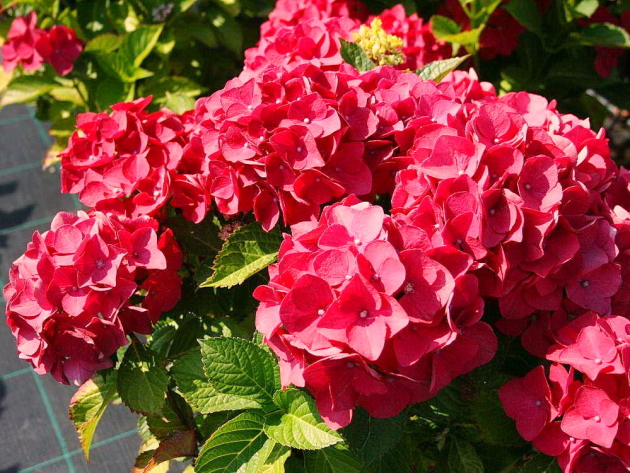
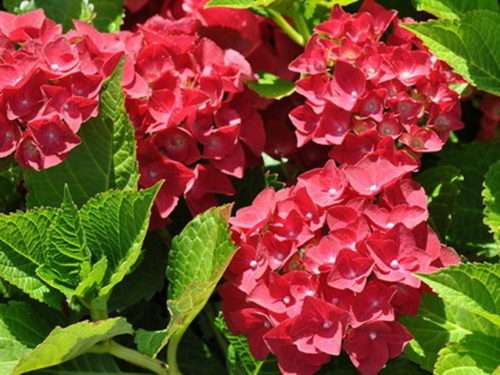
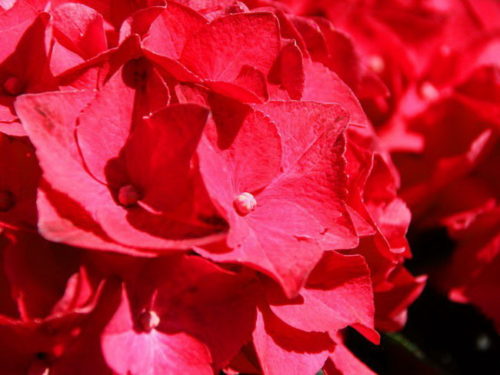
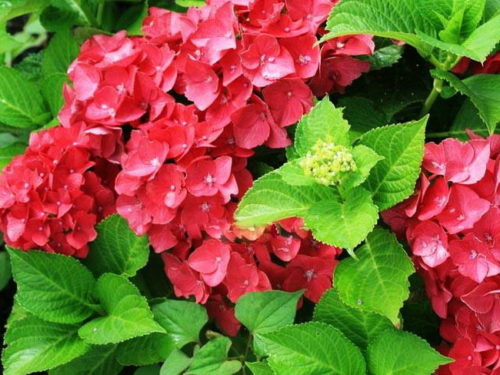
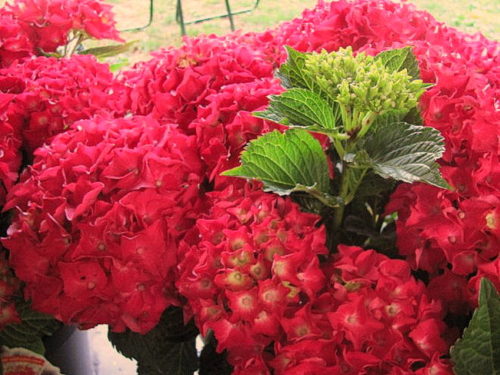
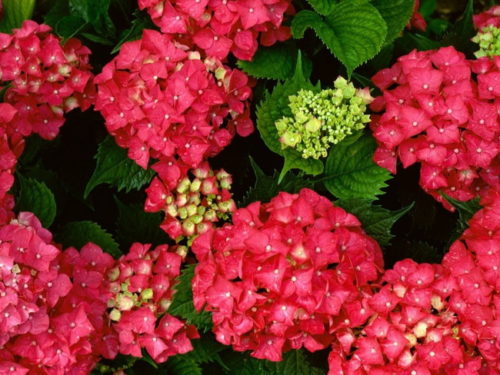
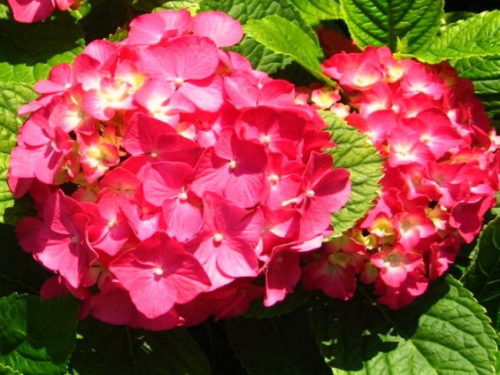
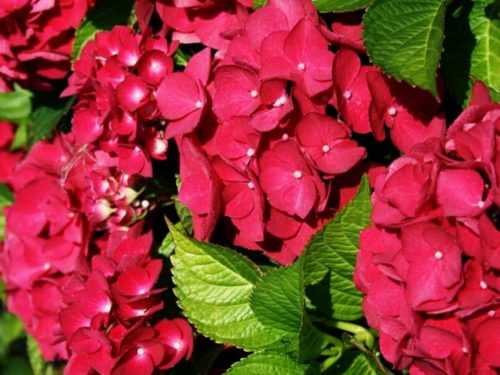
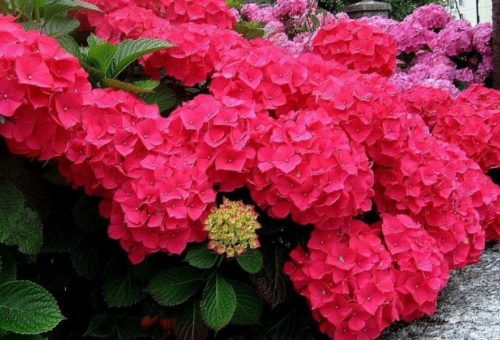
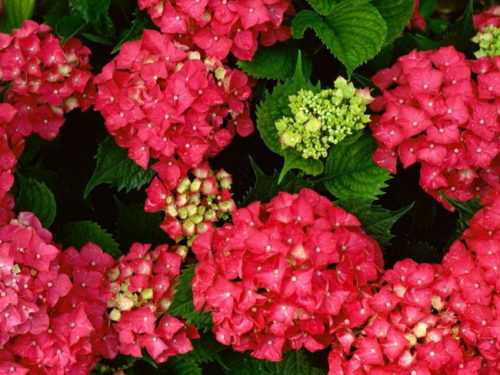
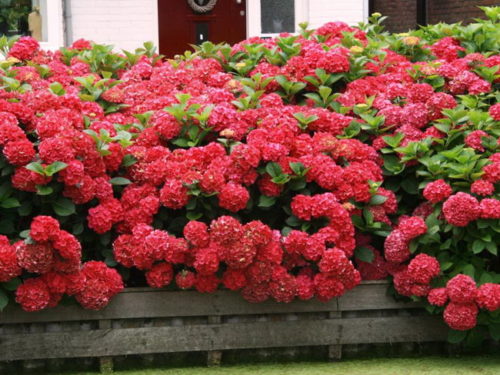
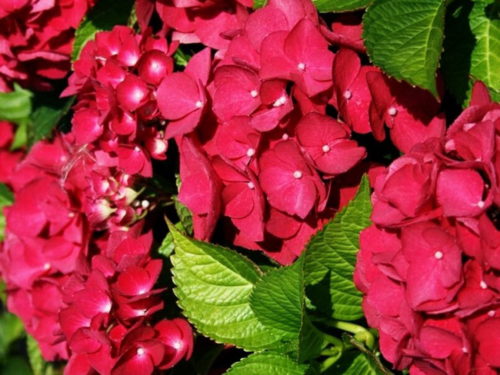
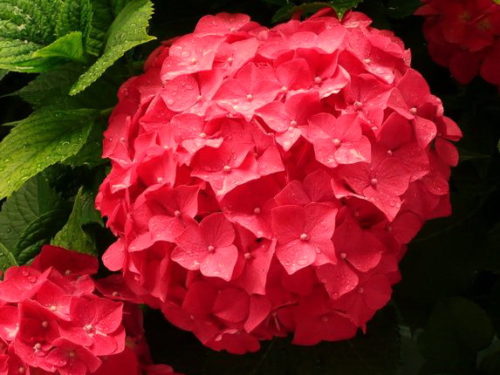
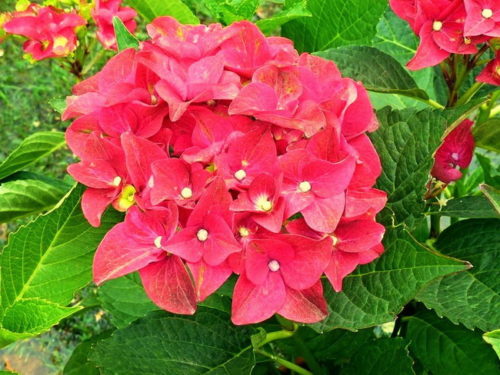
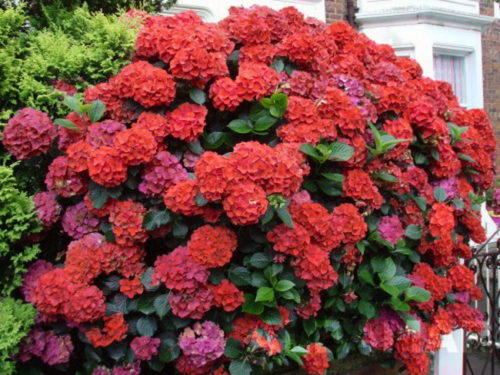
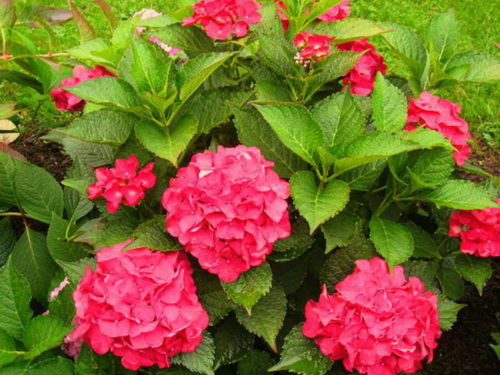
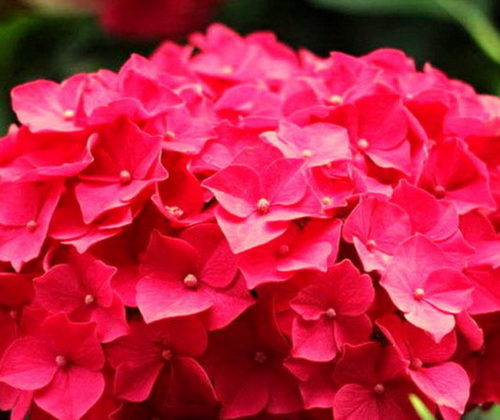
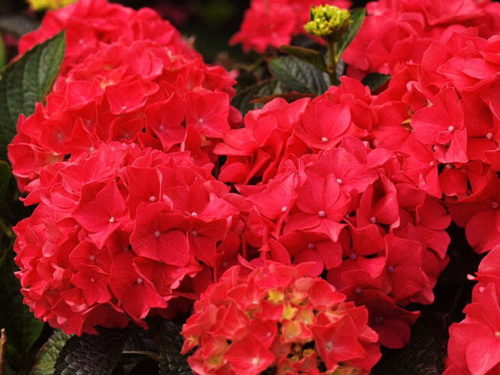
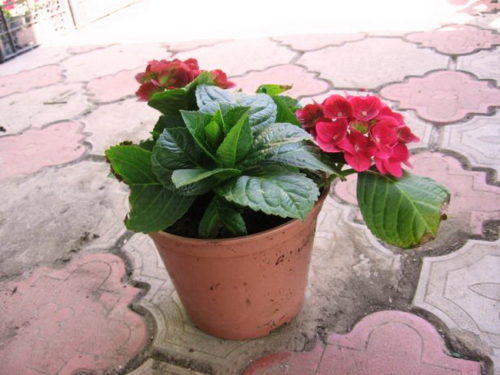

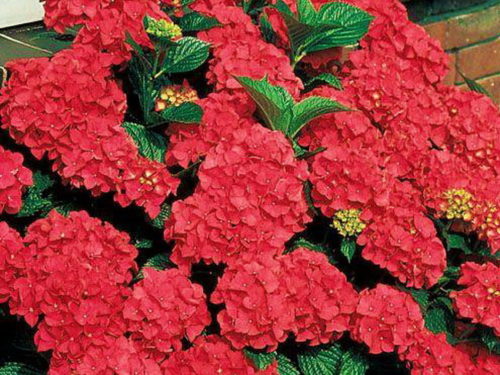
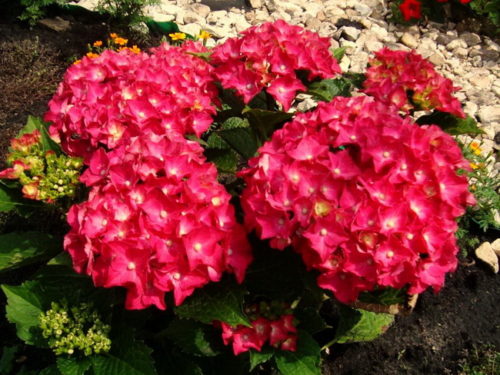
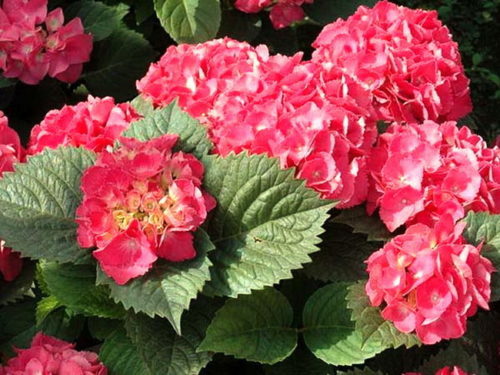
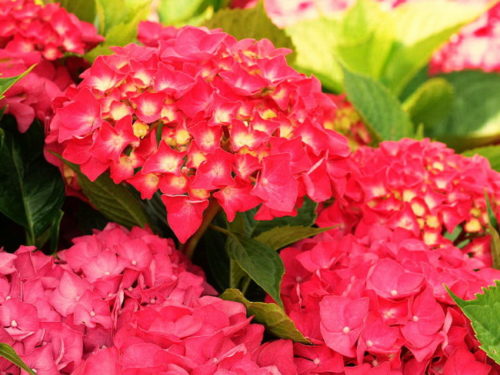
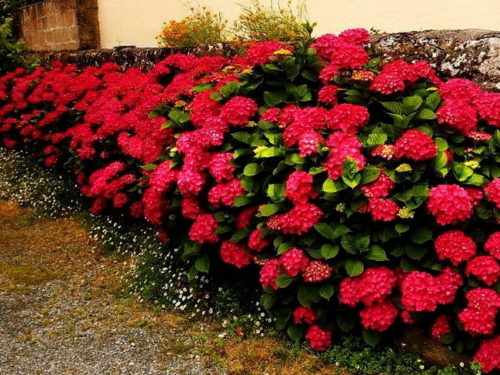












 Start a discussion ...
Start a discussion ...